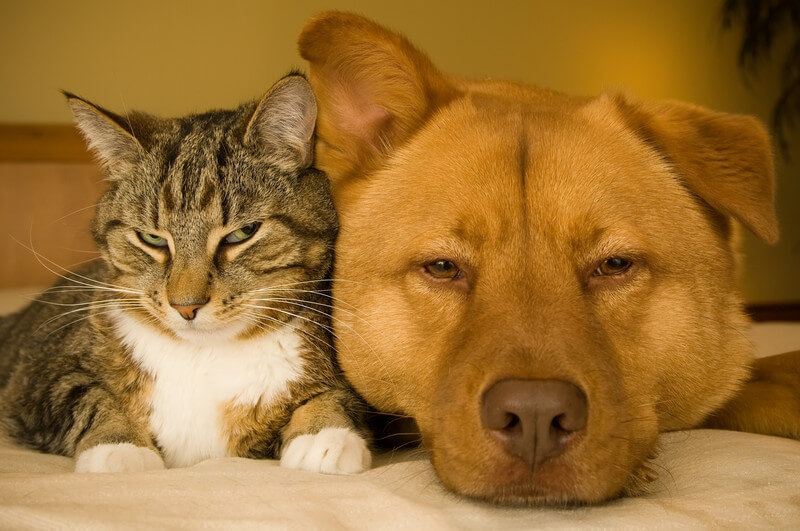Every purchase made online is encrypted with a high level of security you’ve come to expect. Your private information is never shared nor sold, so you can buy with confidence. You can also visit our store if you are in the St. Louis area.

While sharing your furniture with your furry companion has a number of different benefits and has been shown to increase levels of contentment and happiness in some studies, it’s undeniable that pet hair quickly becomes a nuisance. Chances are that if you share your mattress or your other furniture with your pet without taking precautions and dealing with the inevitable hair issues, the majority of your belongings will be covered in fur within a week’s time.
Although pet hair is incredibly annoying, and in some cases triggers allergic reactions, there are ways of dealing with it in order to minimize the impact that it has on your health and happiness. With a little bit of preparation and foresight, you can share your furniture with your pet without worrying about the problems associated with all of that excess hair.
Preventing Pet Hair Build-up
As with many things in life, the easiest way to deal with pet hair on your mattress or on your other furniture is to avoid allowing it to happen in the first place. For some people, this means never allowing pets on beds, couches, futons, etc. However, for those of us who simply can’t resist snuggling up next to our pets, there are a few tricks you can use to keep the hair from building up.
Whenever possible, cover couches and other chairs with a thin blanket or sheet before your pet has a chance to sit on them. The sheet can be covered in hair, washed, and reused without ever having to worry about any of it getting on the furniture or your clothes. While this works for most furniture, this option doesn’t work as well on a mattress.
A lot of the time, pet hair that winds up on your mattress, clothes, and furniture doesn’t get there directly from the pet itself, but rather is shed by the pet and floats around your home, collecting on the floor and clinging to just about everything. This problem can’t be solved by laying down a blanket and requires a more head-on approach to deal with effectively.
A good place to start is by setting up a cleaning routine, say, once or twice a week, where you give yourself enough time to thoroughly sweep and vacuum any rooms that have a buildup of pet hair. When you clean up this hair regularly, you should notice a gradual decrease in the amount of hair that winds up in other spaces. It’s especially important to keep areas like your bedroom and living room free of pet hair, so consider cleaning those areas more often than others.
Another way to prevent pet hair from building up is by regularly brushing your pet outside using a brush specifically designed to help aid and expedite the shedding process. These brushes work by removing any loose hairs from the animal before they even get a chance to shed on your mattress or on your furniture.
How to Clean Pet Hair Off of a Mattress
Mattresses have a reputation for being hard to clean, however, the reality is that most mattresses are actually quite easy to clean and it should only take you a few minutes to clear out the majority of the pet hair. One of the biggest difficulties with pet hair is that oftentimes if you throw affected items directly in the washing machine, the hair will only transfer to other objects or won’t come off completely.
Before washing your sheets and pillowcases, run a vacuum extension tool over the entirety of the sheets while it’s still stretched over the bed, and vacuum the pillowcases as well. Next, take both the sheets and the pillowcases outside and give them a few good shakes to knock any loose hair off. This same method can be used on clothes to prevent pet hair from transferring to other objects of clothing or bedding.
A damp cloth can be used after vacuuming and shaking to help remove any remaining hair. After these three steps, you can put the bedding into your washing machine without worrying about the hair spreading. While the bedding is in the wash, go over the entire surface of the mattress itself with the vacuum, taking care to get into all of the small crevices that may be hiding clumps of fur. If there is still hair remaining, you can use a slightly damp rag or lint roller to get the last few pieces. Be careful if you choose to use a damp rag, you don’t want the bed to be so damp that it doesn’t dry by the time the bedding is ready to go back on.
